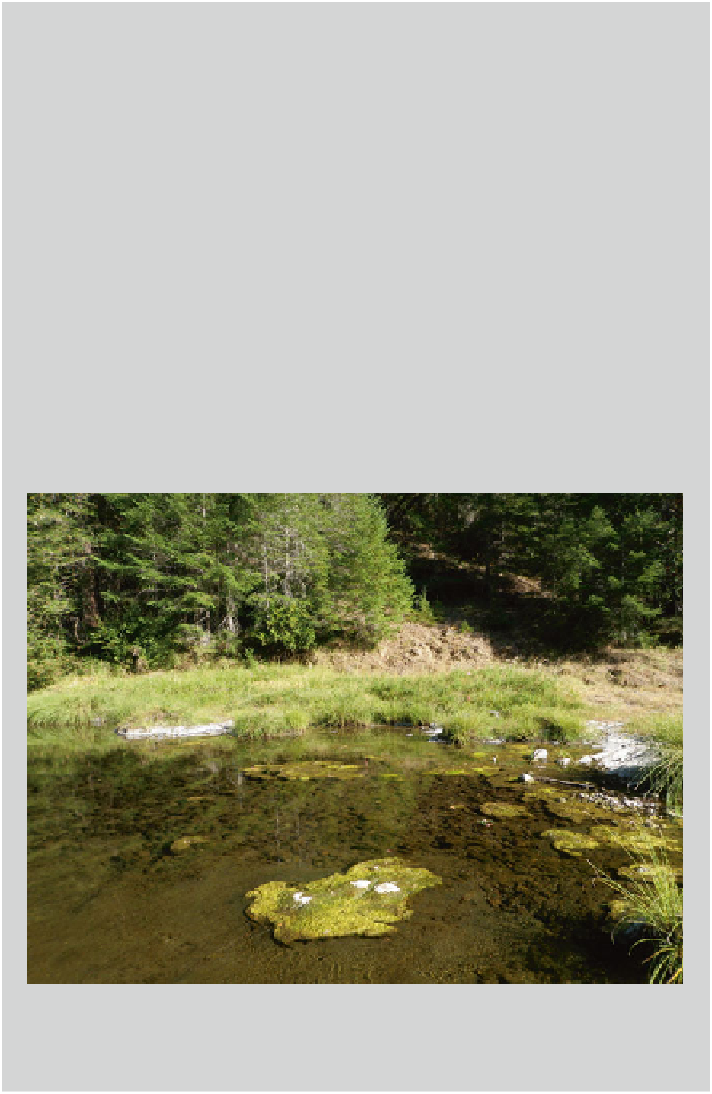Geoscience Reference
In-Depth Information
Box 12.1
(continued)
phycologists) at the Angelo Coast Range Reserve have teamed together to: (1)
share algal identifi cation skills, so local residents can distinguish the “good,
the bad, and the structural” algae (Fig.
12.3
), and (2) partner in basin-scale
surveillance to track changes in salmonids, algae and channel environments
under climatic and human-induced drought. The Eel River Critical Zone
Observatory (
http://criticalzone.org/eel/
), which hosts scientists studying the
effects on stream fl ow of geology, topography, vegetation cover, human activ-
ities and climate in these steep forested basins, promotes exchange among
scientists, ERRP volunteers (
http://www.eelriverrecovery.org/algal_foray
),
and other citizens and tribal members concerned about rivers along the
California North Coast. The collaboration of researchers and citizen scientists
and tribal members in watching, analyzing, interpreting, and forecasting fl ow-
driven changes in river ecosystems will guide practices that could enhance
resilience under drought for this vulnerable but important coastal landscape
(Power et al.
2015
).
Fig. 12.2
Floating cyanobacterial mats in the Eel River. These are incubators where dia-
toms and fi lamentous green algae die, and cyanobacterial propagules are “spawned,” fl oating
down the river to colonize other places
(continued)

Search WWH ::

Custom Search